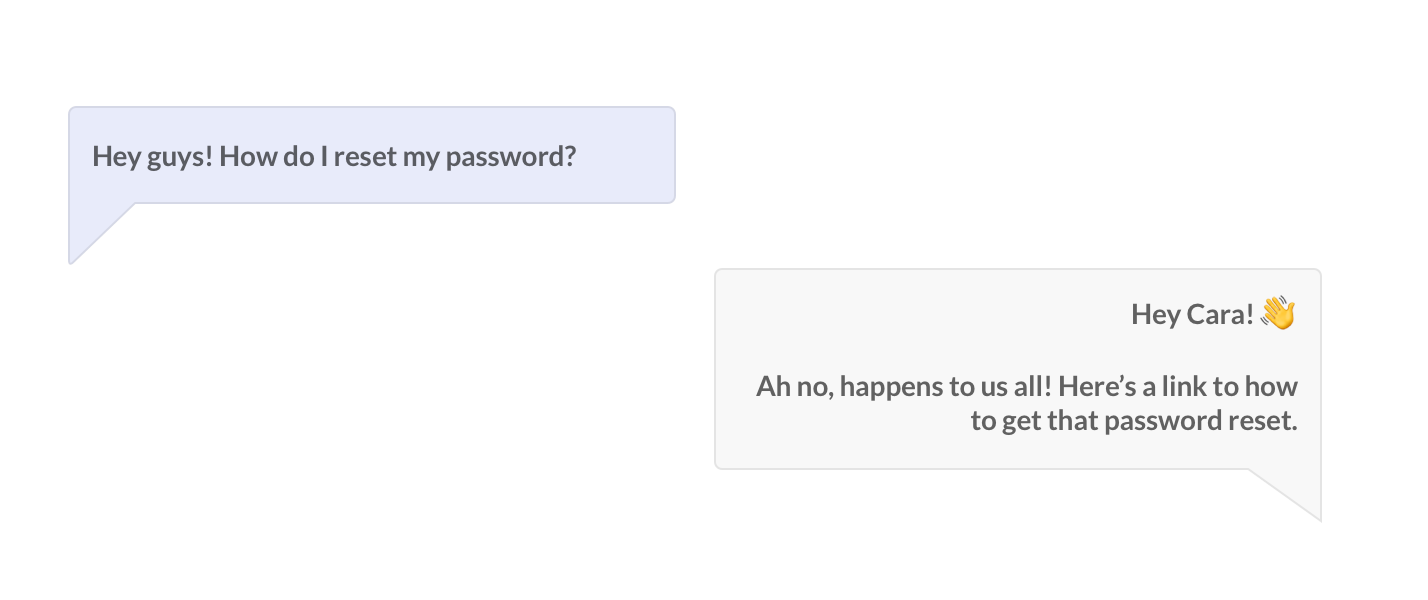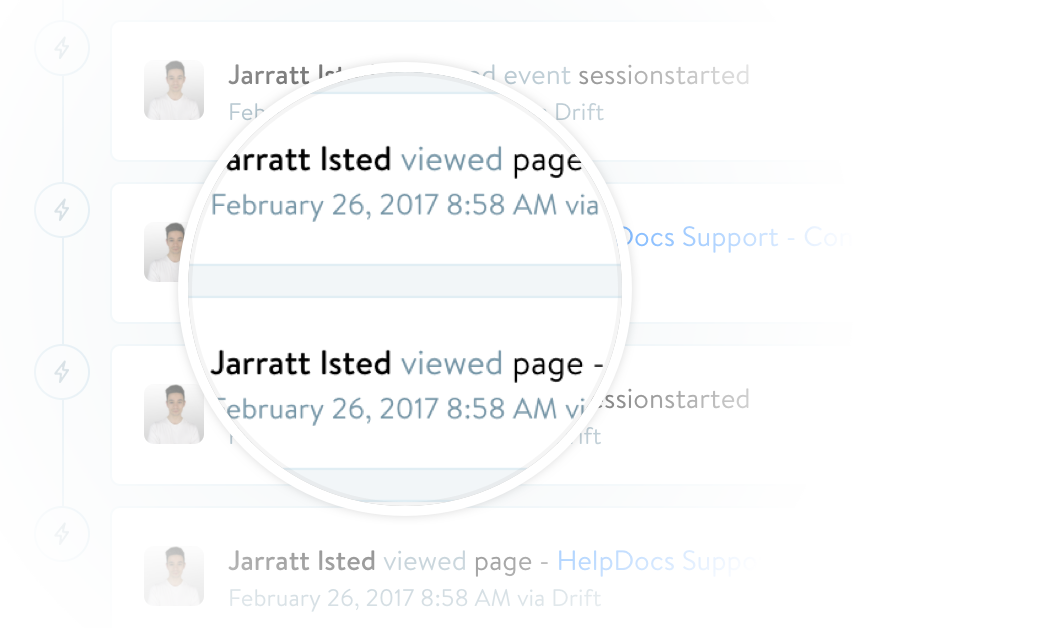
"Hello Jarratt", a faceless agent from Acme Corp Customer Support replied in an email thread. "Thank you for providing that information and for working with us through the troubleshooting process".
Once again, there I was dealing with a large company and their inadequate customer support. Ticket 593571.
Poor customer support bothers me. It bothers me because it's not difficult to be amazing at it. We're all naturally talented at being human. It's the one thing we're all great at.
So what's with the canned responses? And the lack of conversation? And the desire for everyone to close their tickets as soon as they can?

Sure, we can't always fix a customer's problem right away. Sometimes as support agents we need to loop in engineers or get advice from our team. To wait for a customer to reply or a service to regain consciousness.
Good customer support can turn a company around. Just take Zappos as an example. They sell shoes—yes, shoes. Not the most inspiring product, right?
But if you’re a customer support rep, you’ve probably heard of them. They’re the holy grail of using customer support to build a great company, even if the product you sell is darn right dull.
You don’t have to send flowers, cake, or cards. You can if you want to, but you should be getting the basics right first. When a customer gets in touch, just act like a person.
Here’s how to get the most out of each support request.
Use the Power of Enthusiasm & Emoji
With the popularity of emoji (74% of people in the US regularly use them), you no longer have to get your enthusiasm across in words—you can use symbols.
You can use a smiling poop, pair of dancing bunny girls, or even a see-no-evil monkey.
By using emoji in customer support, it’s far easier to create a connection with a customer. A ‘Hey Cara! 👋’ looks far more exciting than a ‘Hey Cara’.
No-one likes being treated like a ticket number, but it’s more common in customer support than you’d think. I’ve had my fair share of conversations with large companies (and even smaller ones) who’ve clearly tried to scale their customer support, but ended up missing the one thing they needed most—emotion.

Larger companies get inundated with support requests, and this tends to turn into a problem. They a) don’t have a good set of documentation and b) prefer their reps to use canned responses.
Trouble is, a canned response will always lack enthusiasm.
You can’t possibly account for every type of customer in every type of mood, so you’re not changing the way you speak depending on the situation. What comes across is a person who couldn’t care less about your issue.
Being able to show your interest in your customers’ issue is a massive advantage. The bar is pretty low, so if you can include something unique to the situation, or an emoji, your customers will be impressed.
The more impressed they are, the longer they’ll stick around.
Use Product Analytics to Dig Deeper
The ability to see what customers do inside your product is something really special. There are more options hitting the market each year.
Some provide record-like analytics, like FullStory, showing you what the customer would’ve seen, while others simple record and share funnel analytics, like Heap.
We use Drift for our live chat, which handily triggers events based on where our customers are clicking after they log in.

If your customer has an issue and you’re struggling to figure out how or why it happened, look towards your product analytics.
Usually they forgot to mention something that’s vital to solving the problem, or if there is a bug, how to reproduce it and plug it up before it becomes a problem again.
You can also use product analytics to create a talking point with your customer. ‘I noticed you…’ or ‘Awesome that you’ve…’ shows you’ve taken notice and that you actually care.
Take Interest in their Company
Another extremely easy thing to do is visit your customers’ website. Have a look around and see if there’s anything you can comment on.
One of our customers recently changed their website, and it looks awesome. So, we mentioned on it. All it takes is a quick compliment and it’ll go far.
Not many reps will do this, so you can stand out.
If you want to go one step further, you could also search for them on Crunchbase—a database of company data. This’ll give you some handy information, like:
- Funding amounts & dates
- Stories in the press
- Latest company tweets
- Location
Use this stuff to keep the conversation going. For example ‘Also, saw you raised your Series A just last month—congrats!’ or ‘Noticed you’re based in Toronto. I was there last year and loved it ☺️’.
Standing out from other companies by providing top-of-the-notch customer support is surprisingly easy. Take a pinch of enthusiasm and a quick look at some analytics.
Make sure not to treat your customers like ticket numbers. Ditch the canned responses and go for something more genuine. It’ll make a big difference to your customer retention and happiness.